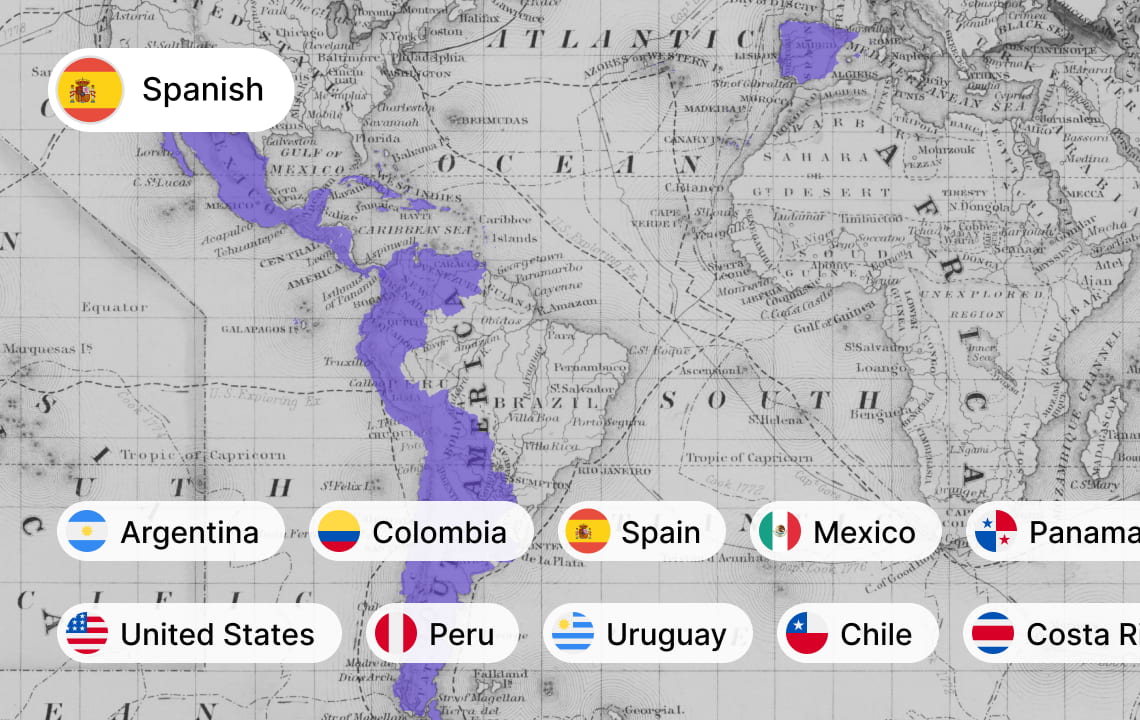
Hispanophone
The Spanish language is one of the world’s most influential linguistic and cultural forces. Today, it is the second-largest mother tongue after Mandarin Chinese and one of the most studied languages globally. Its reach spans continents, economies, and digital platforms, making it a key asset for learners, businesses, and policymakers alike.
Beyond numbers, Spanish links communities across the Atlantic and Pacific, bridging diverse histories and contemporary economies through shared media, education, and cultural exchange.
Beyond numbers, Spanish links communities across the Atlantic and Pacific, bridging diverse histories and contemporary economies through shared media, education, and cultural exchange.
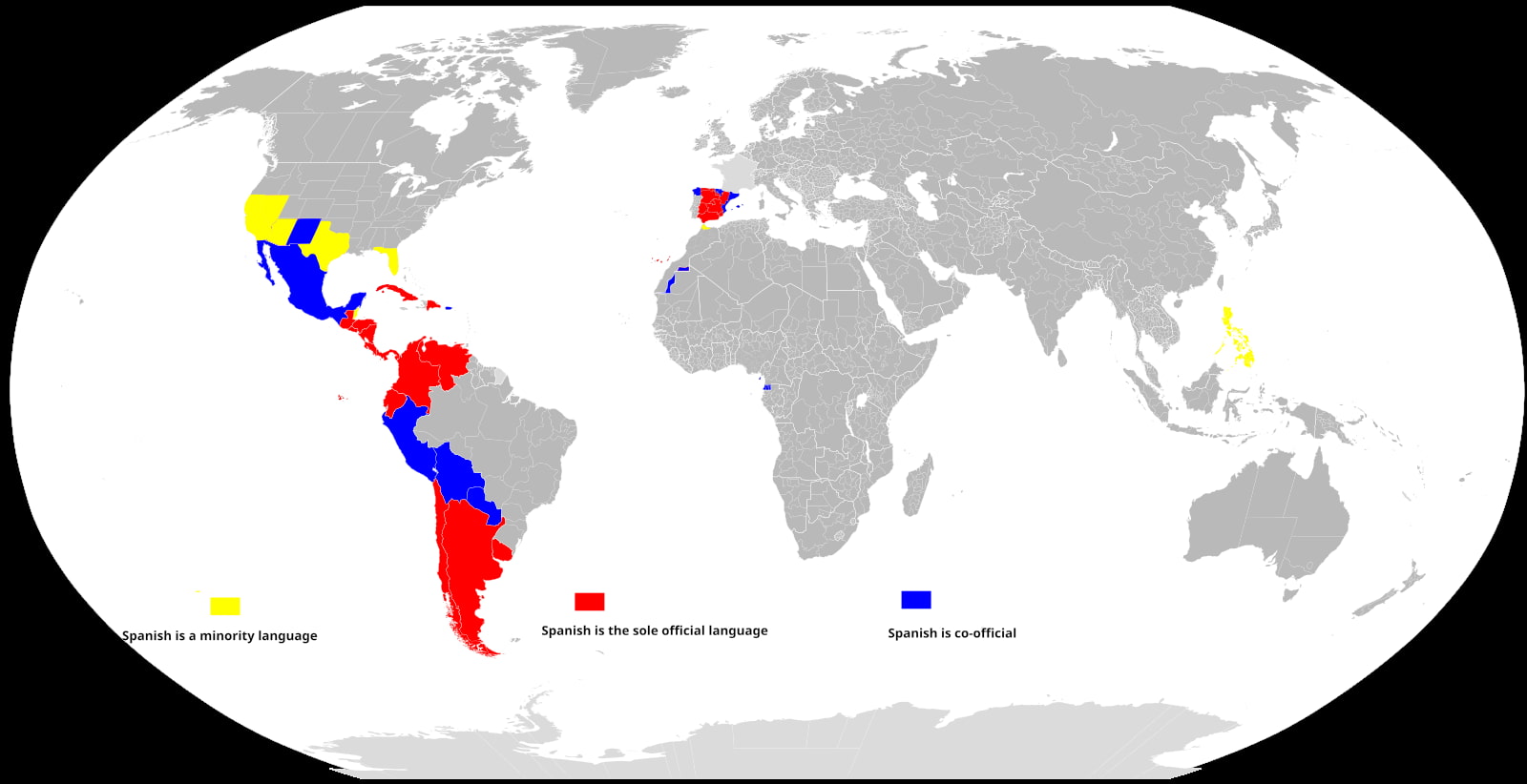
Source: Spanish Language Map
Roughly half a billion people speak Spanish as a native language, and the broader global community of users, including second-language speakers and learners, approaches 600 million. Spanish is an official language in 21 countries, and it is used by international organizations, regional blocs, and cross-border media.
Mexico has the largest number of native speakers, followed by Colombia, Spain, and Argentina. The United States hosts one of the largest Spanish-speaking populations in the world, driven by immigration and multigenerational bilingual communities.
This scale ensures that Spanish is not only demographically significant but also economically and culturally central across multiple regions.
Mexico has the largest number of native speakers, followed by Colombia, Spain, and Argentina. The United States hosts one of the largest Spanish-speaking populations in the world, driven by immigration and multigenerational bilingual communities.
This scale ensures that Spanish is not only demographically significant but also economically and culturally central across multiple regions.
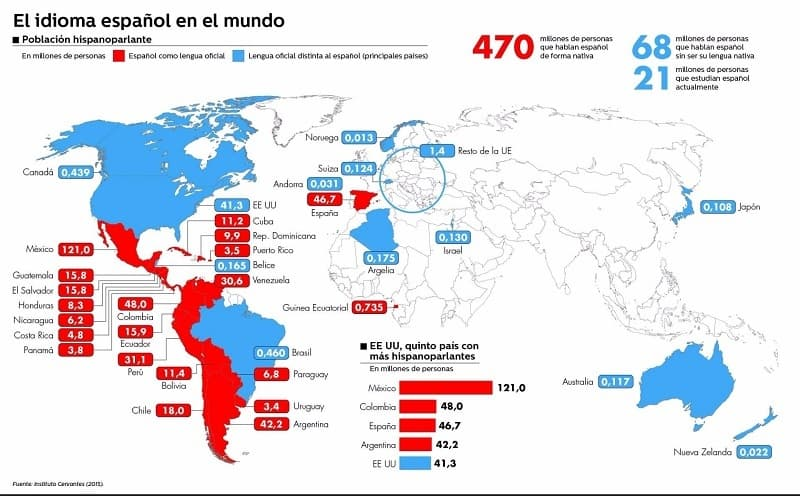
Spanish and Its Varieties
Spanish is not one uniform language but a collection of closely related varieties. They share the same core grammar and vocabulary, and speakers can usually understand one another, but pronunciation, word choice, and usage differ by region.
Major dialect groups include Mexican, Central American, Caribbean, Andean, Chilean, Paraguayan, and Rioplatense in the Americas, and northern, Andalusian, and Canarian in Spain. Spanish is also spoken in Equatorial Guinea, Gibraltar (Llanito), and in Judaeo-Spanish (Ladino) communities.
Despite this diversity, mutual comprehension is generally high, though areas like health or law require careful localization.
Despite this diversity, mutual comprehension is generally high, though areas like health or law require careful localization.
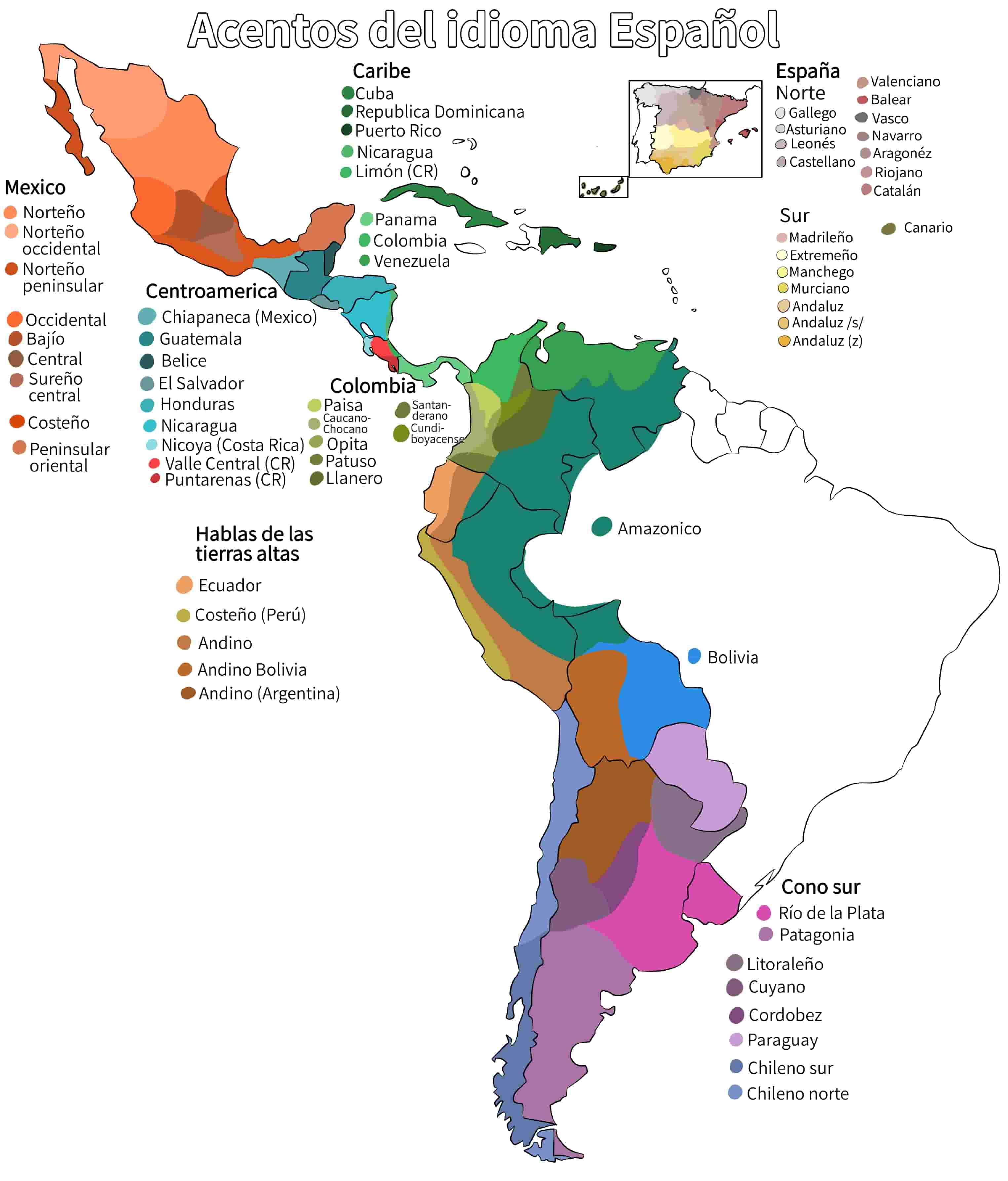
Key pronunciation differences include whether c/z and s are distinct (casa vs. caza in Spain), the merging of ll and y (calló vs. cayó), and the dropping of final s in the Caribbean and southern Spain. Other features include regional variations in j, n, and r.
Vocabulary also differs widely: Mexican Spanish preserves Indigenous sounds like tz and tl (Tlaxcala), and many American terms come from languages such as Nahuatl. Some words shift meaning drastically—coger and concha are neutral in Spain but vulgar in parts of Latin America.
Vocabulary also differs widely: Mexican Spanish preserves Indigenous sounds like tz and tl (Tlaxcala), and many American terms come from languages such as Nahuatl. Some words shift meaning drastically—coger and concha are neutral in Spain but vulgar in parts of Latin America.
Grammar varies mainly in addressing “you.” Spain contrasts tú/vosotros with usted/ustedes, while Latin America uses ustedes for all plurals, and many countries prefer vos (vos tenés).
Spain also shows features like leísmo, and tense preferences differ: Spain often uses the present perfect (he llegado), while the Americas favor the preterite (llegué).
Spain also shows features like leísmo, and tense preferences differ: Spain often uses the present perfect (he llegado), while the Americas favor the preterite (llegué).
Spanish in Latin America
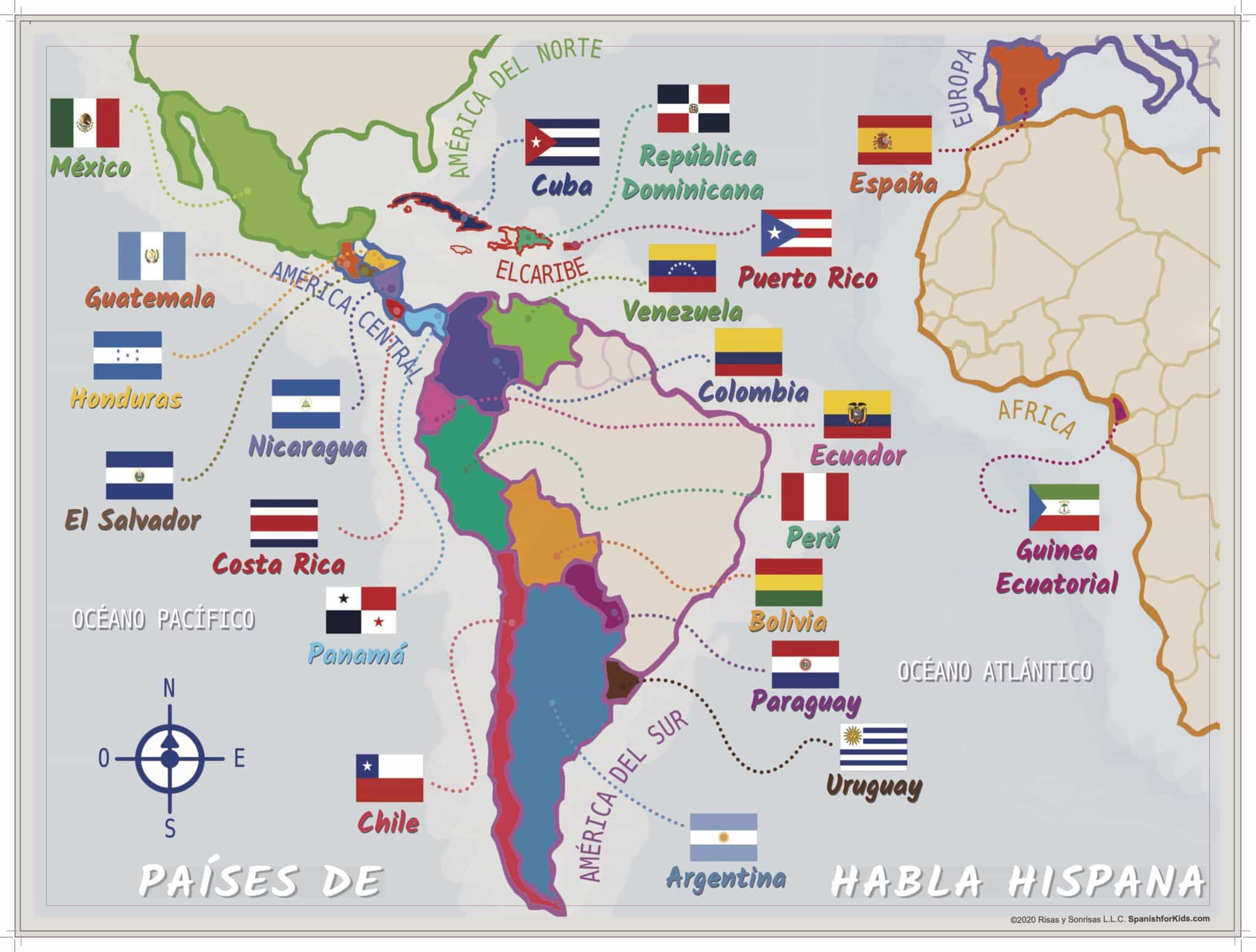
Spanish across Latin America reflects Indigenous, African, European, and Asian influences, along with local innovation. Some notable patterns:
- Mexican and Central American Spanish: Broadly conservative pronunciation, with regionally rich lexicon influenced by Nahuatl, Maya, and other Indigenous languages. Mexico’s media industry sets trends across the hemisphere.
- Caribbean Spanish (Cuba, Dominican Republic, Puerto Rico, coastal Venezuela and Colombia): Faster rhythm, syllable-final s often aspirated or dropped, and a vibrant colloquial vocabulary that travels globally via music and film.
- Andean Spanish (Peru, Ecuador, Bolivia, parts of Colombia and northern Chile/Argentina): Clear articulation, influences from Quechua and Aymara in vocabulary and intonation, and robust use in education and administration.
- Rioplatense Spanish (Argentina and Uruguay): Known for voseo (vos instead of tú) and a distinctive sh/zh sound for ll and y (yeísmo rehilado). Buenos Aires has outsized cultural influence in literature, theater, and music.
- Chilean Spanish: Distinct intonation, high speech rate, and colloquialisms; influential in regional media and education.
Spanish in the United States: a special case
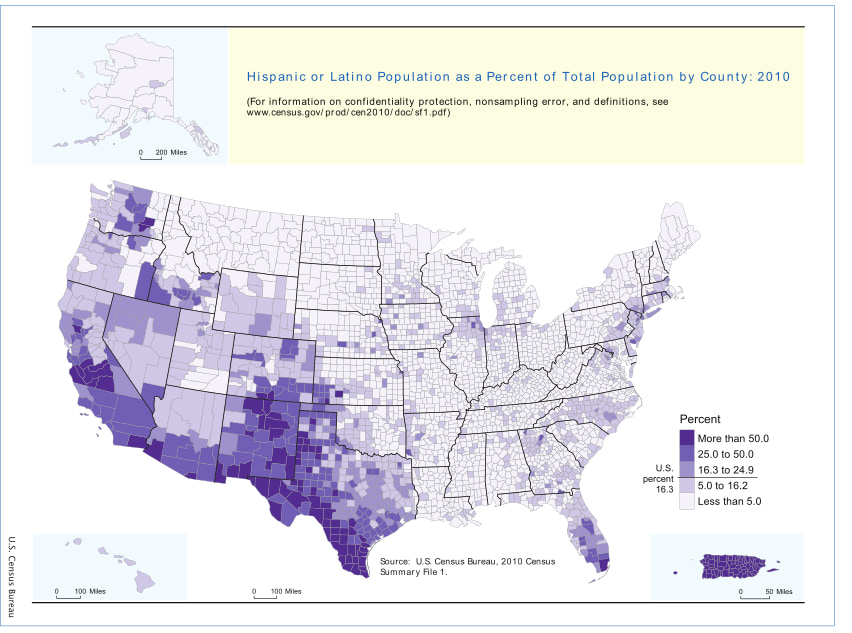
The U.S. is home to one of the largest Spanish-speaking populations, shaped by immigration from Mexico, Central America, the Caribbean, and South America, as well as long-standing communities in the Southwest and Florida.
Spanish is deeply embedded in neighborhoods, schools, media, and commerce. Generational shifts produce varied outcomes: many young bilinguals use English in formal domains but maintain Spanish at home and in social life; others participate in fluid code-switching.
Media consumption spans both English and Spanish, with growth in bilingual outlets, podcasts, and streaming content. For public agencies, Spanish is essential to equitable service delivery; for companies, it is fundamental to customer experience and market expansion.
Mutual intelligibility among Spanish Dialects
Spanish has many dialects and accents, but educated speakers can usually understand each other. Even though pronunciation, vocabulary, and grammar vary.
Early imported films were dubbed into a single version, while today dubs are usually made in Peninsular Spanish for Spain, a neutral Mexican variety for most of Latin America, and sometimes Rioplatense for Argentina, Uruguay, and Paraguay.
This practice has fostered the idea of “Standard” or “Neutral” Spanish, widely used in media, academia, and formal contexts.
This practice has fostered the idea of “Standard” or “Neutral” Spanish, widely used in media, academia, and formal contexts.
Overall, mutual intelligibility across regions remains high, though in fields like medicine or law, local adaptation is often necessary for clarity.
Spanish and Its Neighbors
Spanish sits at the heart of the Romance language family, so it shares a lot with other European languages that also come from Latin.
This shared origin makes reading across languages easier than listening. In writing, many words look familiar between Spanish and Portuguese, Italian, Catalan, or French. In speech, however, sound systems and accents reduce mutual understanding.
This shared origin makes reading across languages easier than listening. In writing, many words look familiar between Spanish and Portuguese, Italian, Catalan, or French. In speech, however, sound systems and accents reduce mutual understanding.
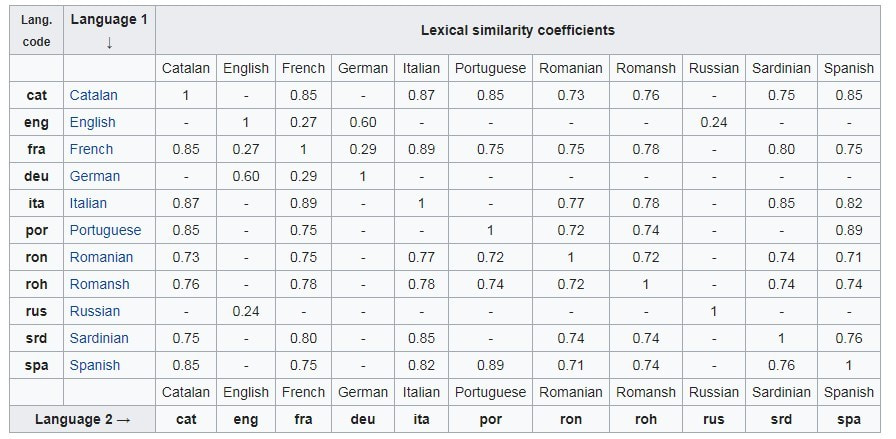
With Portuguese, Spanish readers usually do well, especially with formal texts. In conversation, intelligibility drops because Portuguese has more vowel reductions and different rhythms. With Italian, Spanish speakers often understand slow, clear speech about everyday topics.
Italian sounds are close to Spanish, which helps. French is trickier: many shared words exist, but French has nasal vowels and strong sound changes, so listening is harder than reading.
Italian sounds are close to Spanish, which helps. French is trickier: many shared words exist, but French has nasal vowels and strong sound changes, so listening is harder than reading.
Catalan and Galician are closer to Spanish, and many Spaniards already hear them in daily life, so understanding is often good, especially in writing. Romanian is the most distant of the major Romance languages; the Latin core is there, but Slavic influence and sound shifts make listening difficult.
Outside Romance, Spanish has low mutual intelligibility with English or German, though modern life brings many shared international words.
Where is Spanish growing and why does it matter?
Spanish continues to expand in education systems, media markets, and service industries across the Americas and Europe. In Latin America, it underpins regional trade, public administration, and cultural exchange. In the United States, it is the most spoken language after English and is crucial in healthcare, education, legal services, marketing, and customer support.
This diffusion matters because language lowers transaction costs: businesses serve clients more effectively, public institutions ensure equitable access, and cultural industries reach broader audiences. For learners and professionals, Spanish unlocks cross-border collaboration, from tech and tourism to diplomacy and development.
This diffusion matters because language lowers transaction costs: businesses serve clients more effectively, public institutions ensure equitable access, and cultural industries reach broader audiences. For learners and professionals, Spanish unlocks cross-border collaboration, from tech and tourism to diplomacy and development.
For businesses, Spanish expands market access and reduces friction across supply chains and customer support. For governments and nonprofits, it supports inclusion, health equity, and civic participation.
For learners, Spanish offers an unusually rich ecosystem of media, communities, and career pathways—plus the satisfaction of connecting with hundreds of millions of people across dozens of countries.
For learners, Spanish offers an unusually rich ecosystem of media, communities, and career pathways—plus the satisfaction of connecting with hundreds of millions of people across dozens of countries.
Spanish online and in the media
Spanish ranks among the most used languages on the internet and social media, reflecting both its large speaker base and vibrant content ecosystems. Spanish-language newsrooms, streaming platforms, podcasts, gaming communities, and creator economies connect audiences from Madrid and Mexico City to Miami, Bogotá, Buenos Aires, and beyond.
The effect is self-reinforcing: a large audience incentivizes more Spanish content, while platforms optimize for Spanish engagement, driving visibility and monetization.
For learners, this digital abundance is a practical advantage. There is no shortage of high-quality, authentic input for every proficiency level and interest area.
The effect is self-reinforcing: a large audience incentivizes more Spanish content, while platforms optimize for Spanish engagement, driving visibility and monetization.
For learners, this digital abundance is a practical advantage. There is no shortage of high-quality, authentic input for every proficiency level and interest area.
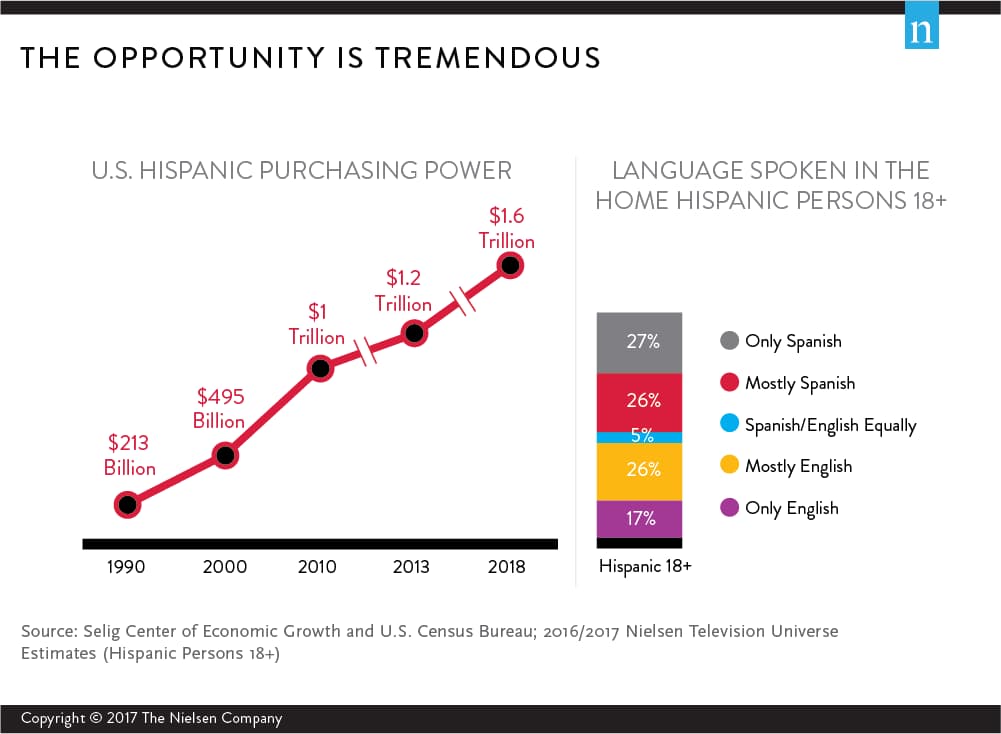
Culture and global influence
Spanish-language literature, cinema, and music command global audiences. The Latin American literary Boom introduced the world to authors whose works remain staples in translation and education. Contemporary film industries in Spain, Mexico, Argentina, and Colombia regularly win international awards and shape global aesthetics.
In music, Spanish dominates charts through pop, rock en español, and especially reggaeton and Latin trap, propelled by artists who collaborate across borders. This cultural vitality enhances Spanish’s soft power, drawing learners to the language and creating feedback loops that benefit publishing, streaming, live events, and tourism.
In music, Spanish dominates charts through pop, rock en español, and especially reggaeton and Latin trap, propelled by artists who collaborate across borders. This cultural vitality enhances Spanish’s soft power, drawing learners to the language and creating feedback loops that benefit publishing, streaming, live events, and tourism.
Practical tips for learners
- Choose a target variety early: Mexico, Spain, Colombia, Argentina, or another region. This anchors your pronunciation and vocabulary while remaining open to other accents.
- Build smart: Focus on frequency-based vocabulary and high-utility grammar (present, past, future, and key subjunctive triggers).
- Balance input and output: Pair reading and listening (news, series, podcasts) with speaking and writing (language exchanges, tutors, journals).
- Set goals with certification: DELE for formal credentials; SIELE for modular, quick verification—both recognized internationally.
- Live in the language: Follow Spanish-language news, sports, and creators; swap your phone or app settings to Spanish; participate in online communities.
Voice Translation into Spanish
Translating voice into Spanish requires more than direct conversion of words. Key challenges include accent diversity, code-switching in bilingual communities, and homophones.
VMEG addresses these issues with accent-balanced training datasets, dynamic language identification for smooth code-switching, and lexicon injection to handle names and slang.
Challenges and VMEG.AI Solutions
Accent diversity
Spanish has many accents—Peninsular, Caribbean, Andean, Rioplatense (Argentina/Uruguay), Chilean, and Mexican/Central American. Traits like aspirated or dropped “s,” very fast speech, and the sh/zh-like “y/ll” in the River Plate can cause recognition mistakes.
VMEG’s solution: Training data is balanced across regions, so ASR and TTS learn local features while keeping speech clear and easy to understand.
VMEG’s solution: Training data is balanced across regions, so ASR and TTS learn local features while keeping speech clear and easy to understand.
Code-switching
In bilingual communities, speakers often switch between Spanish and English mid-sentence, which confuses detection and hurts accuracy.
VMEG’s solution: Language identification follows the switch and transcribes mixed-language speech correctly.
VMEG’s solution: Language identification follows the switch and transcribes mixed-language speech correctly.
Names and homophones
Indigenous names and regional slang are rare in training data; seseo and yeísmo make different words sound the same.
VMEG’s solution: Custom word lists and context-aware models improve proper-name accuracy and pick the right word when several sound alike.
VMEG’s solution: Custom word lists and context-aware models improve proper-name accuracy and pick the right word when several sound alike.
Voseo and verb forms
Nonstandard verb forms (vos tenés, hablás, etc.) differ from textbook Spanish and can be misheard or mistranslated.
VMEG’s solution: Models are trained on diverse verb systems, including voseo, to recognize and translate them accurately.
VMEG’s solution: Models are trained on diverse verb systems, including voseo, to recognize and translate them accurately.
Punctuation and phrasing
Long, clause-heavy speech without clear punctuation is hard to read and can change the meaning in subtitles or translations.
VMEG’s solution: Smart auto-punctuation and phrasing reflect natural pauses; line length and speech speed are adjusted for each language pair to keep timing and meaning.
VMEG’s solution: Smart auto-punctuation and phrasing reflect natural pauses; line length and speech speed are adjusted for each language pair to keep timing and meaning.
Domain-specific jargon
Medical, legal, and technical terms vary by country and must be precise.
VMEG’s solution: Field-tuned models, region-aware settings, and project-level personalization deliver accurate, context-sensitive output.
VMEG’s solution: Field-tuned models, region-aware settings, and project-level personalization deliver accurate, context-sensitive output.
Conclusion
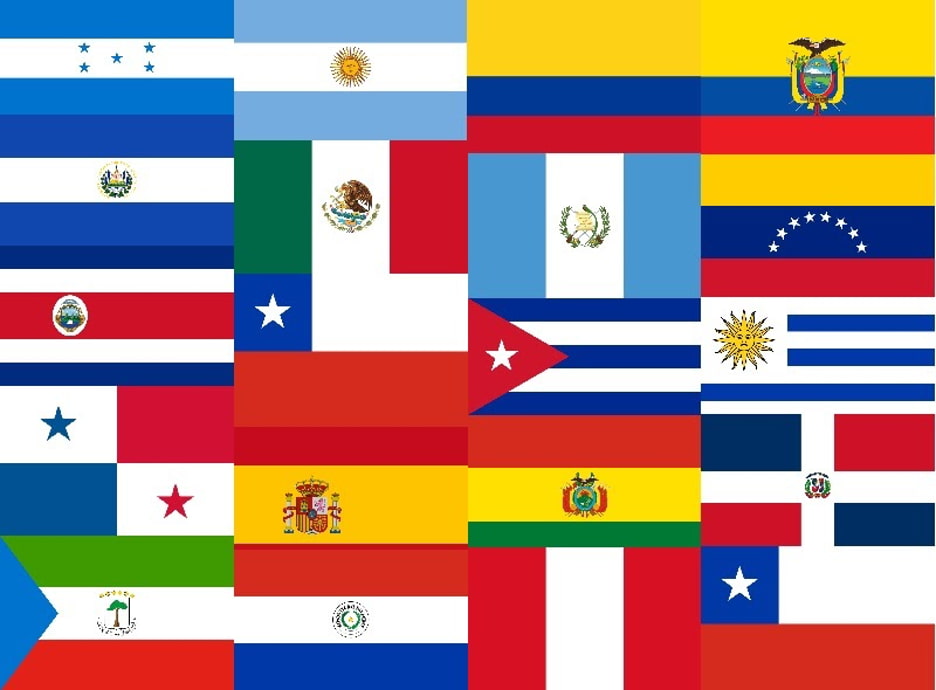
Spanish stands as a truly global language: demographically vast, culturally vibrant, and economically strategic. Its many dialects and accents rarely block mutual understanding, yet they highlight the richness and diversity that give Spanish its global reach.
From literature and music to media, education, and business, Spanish connects communities across continents and drives both cultural exchange and market growth. In the digital era, its presence on streaming platforms, social media, and global industries only reinforces its influence.
At the same time, effective communication in Spanish requires sensitivity to regional variation and context. This is where technology, such as VMEG’s adaptive voice translation, plays a key role: preserving clarity across accents, handling code-switching, and ensuring precise domain-specific language.
Together, human tradition and AI innovation secure Spanish’s position as not only one of the world’s great languages, but also one of its most future-facing.
Connect with 600 million Spanish speakers worldwide
With VMEG’s adaptive voice translation, you can overcome accent diversity, handle code-switching, and ensure precise domain-specific output. From media localization to business communication, we help you deliver Spanish that feels natural, authentic, and region-aware.
